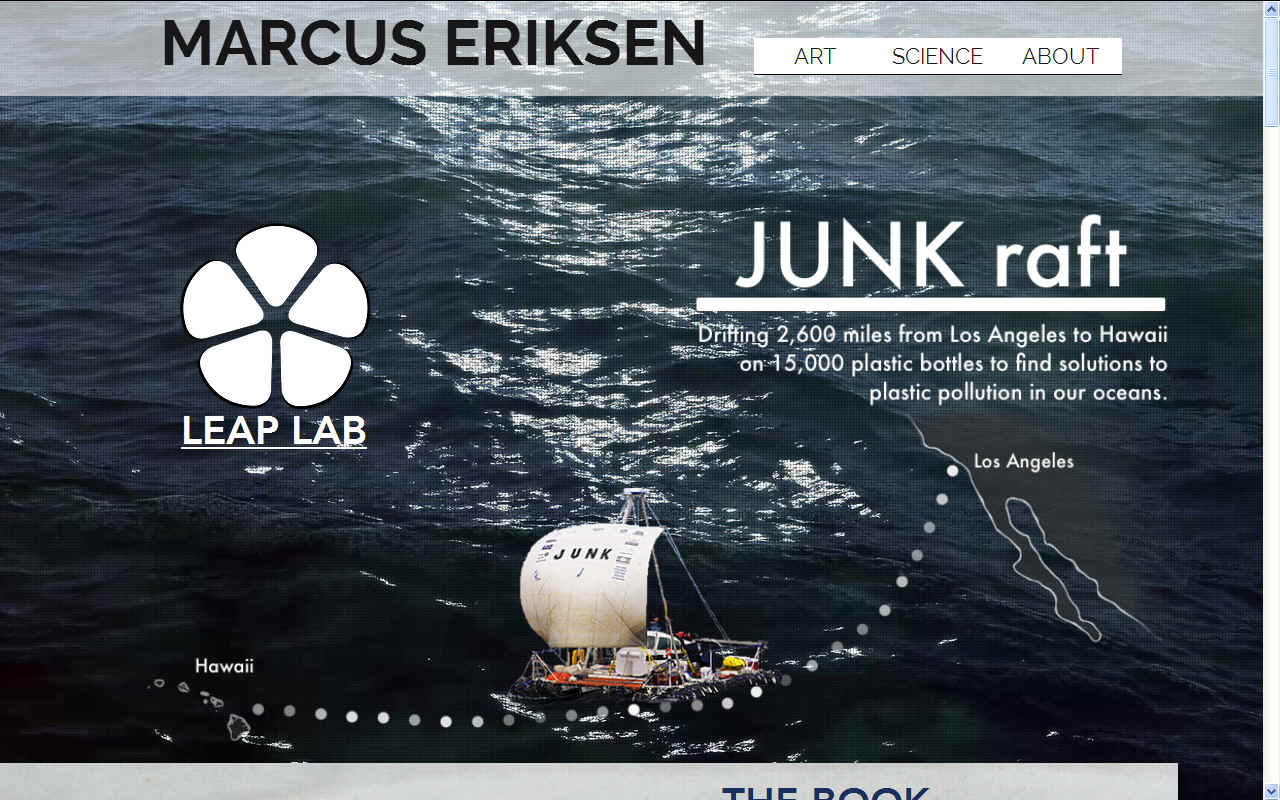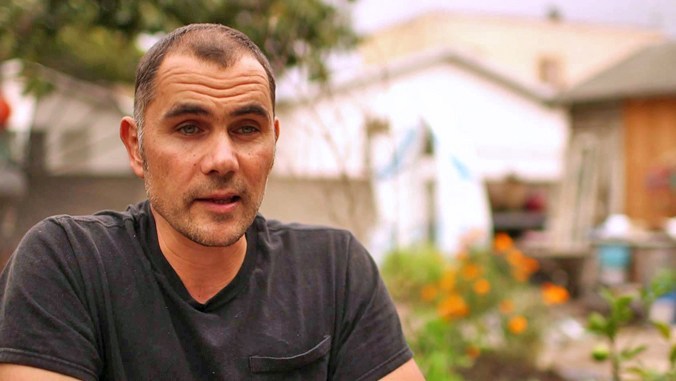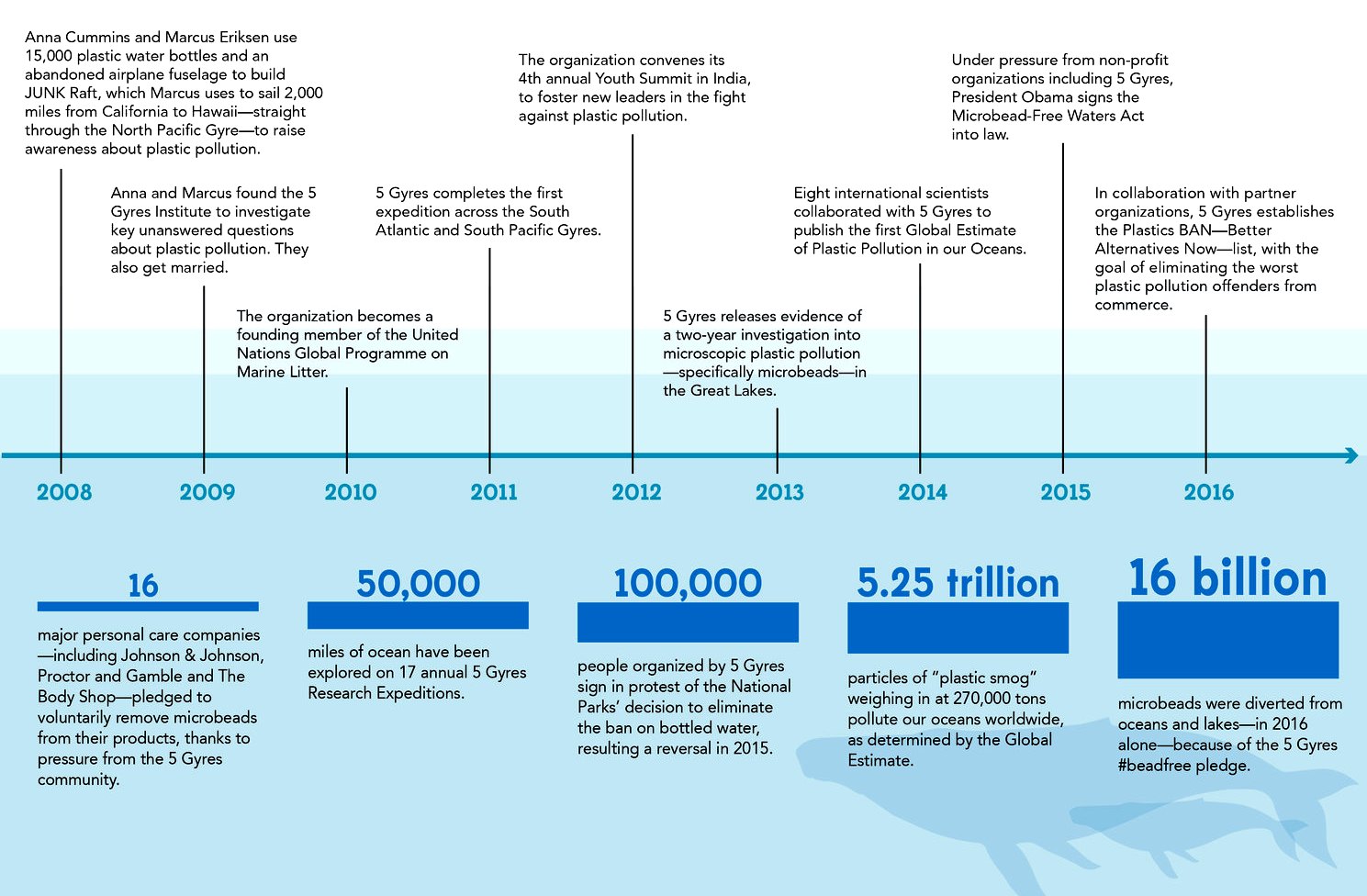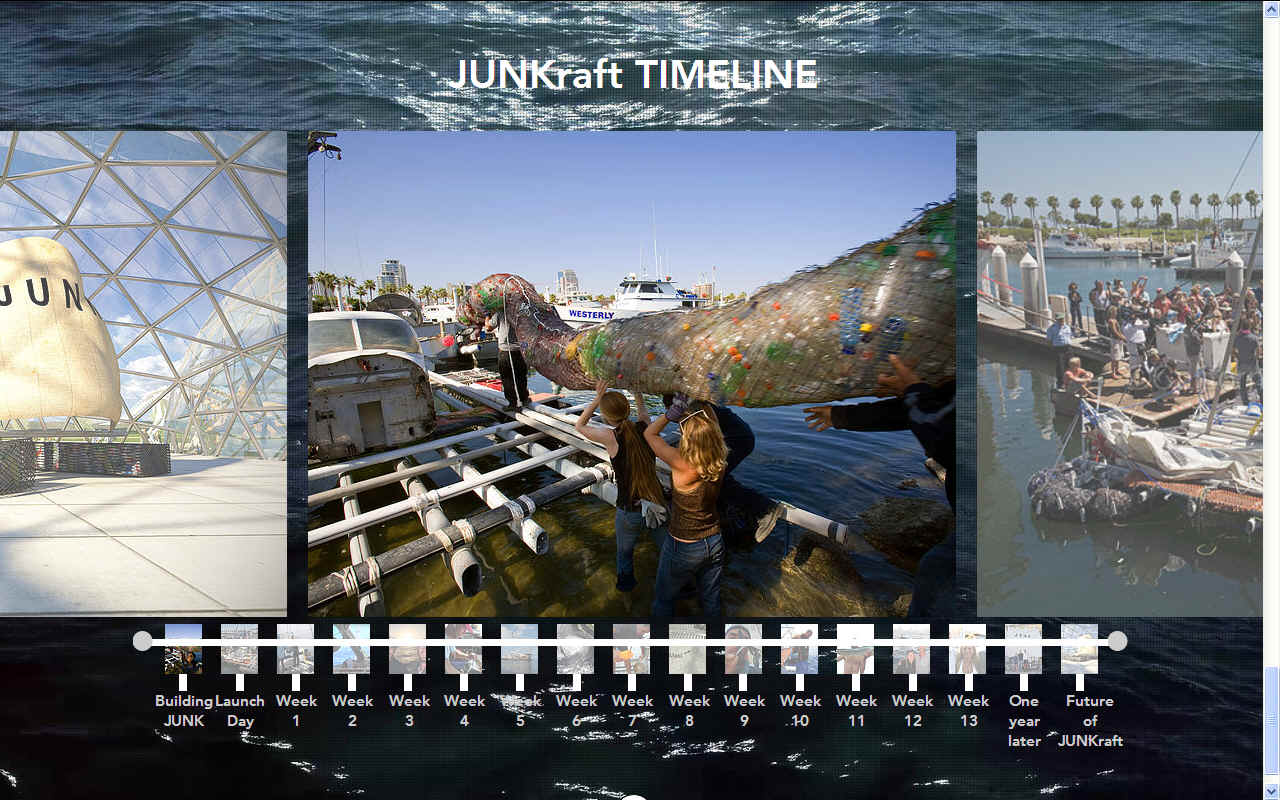|
5 GYRES INSTITUTE
PLEASE USE OUR A-Z INDEX TO NAVIGATE THIS SITE
|
|||
POLY KON-TIKI - In 1947 Thor Heyerdahl built the Kon-tiki Raft from balsa wood logs to prove his theory of colonization of the Polynesian Islands from the Americas. Junk-Raft looks remarkably like the Kontiki concept, except that an aircraft body replaced the timber hut and plastic bottles in fishing net replaced the balsa floats.
In 2008, Marcus Eriksen met Anna Cummins on a sailing expedition to research pollution in the North Pacific Gyre. As they sailed from Hawaii to Los Angeles, samples of broken down plastics were collected mixed with marine life. At night, the couple saw something that alarmed them. Small fish that surfaced nocturnally to feed were mistaking contaminated plastic waste for food.
These fish were consumed by larger predators, the toxins working their way up the food chain and onto our
plates having been bio-magnified to concentrate the poisons.
Devoted
to each other and the plastic cause, Anna and Marcus founded 5 Gyres in 2009. In 2010 the Institute
became a member of the United Nations Global Programme on Marine Litter.
RECYCLING?
But why was that?
Because domestic US facilities could not keep up and the cost of treatment plants would cost more.
Plastic production surged from 15 million tons in 1964 to 311 tons in 2014 - an increase of more than 2,000 percent - in some kind of poly-epidemic surge.
Currently (2019), more than 300 million tons of new plastic is produced annually and less than 10% is recycled.
As oil prices fluctuate, so too does the price of plastic. When those markets are depressed, virgin plastic becomes far cheaper to buy than recycled. Many plastic products degrade each time they are re-processed - unlike aluminium, steel or glass, which can be perpetually recycled.
This makes plastics progressively less valuable, though pyrolysis treatment can extend the working life of many plastics as part of a responsible waste management scheme, but once again there is a cost to being responsible.
Without a profitable market in which to sell it, it’s not cost-effective for many recycling companies to process plastic, so many sell it to other countries at a loss, being the cost of a disposable society.
In 2011, plastic trash was America's primary export to
China.
China no longer accepts plastic imports.
8 MILLION METRIC TONS OF PLASTIC ENTER THE OCEAN EACH
YEAR
Local waterways act like conveyor belts, sending plastic straight out to sea.
Most plastic are made from petroleum and engineered to last - some for thousands of years.
In the ocean, sun and waves break down most plastics into small micro particles, which never truly biodegrade.
5 Gyres led research that found there is an estimated 5.25 trillion particles of “plastic smog” weighing in at 270,000 tons in our oceans worldwide.
Once in the water, microplastics attract persistent organic pollutants like flame retardants and other industrial chemicals. These are linked to human health problems - even cancer.
Ocean plastic particles can be one million times more toxic than the water around them. These pollutants can work their way up the food chain - and onto our plates.
The 5 Gyre Institute is a 501(c)(3) nonprofit organization in special consultative status with the United Nations Economic and Social Council since 2017.
ALTERNATIVE CULLING - Health Service budget cuts mean that social care in the community is suffering, so that the elderly sometimes die from otherwise minor ailments from complications. The fact is that generally humans are living longer from better diets, housing and medicines. That is why the retirement age has been raised.
Fish in the diet has been shown to prolong life over meat eaters (red meat in particular) one reason the Japanese have so many centenarians. It could be argued that by not cleaning the oceans, population growth might be halted in the longer term when people develop cancer as a result of eating toxic fish. An unkind notion and inhumane, but surely treating cancer patients in large numbers will cost more than cleaning the oceans - unless future budget cuts mean suspending treatments - and that is the secret agenda.
Spending on cancer research might go to offset the rising toxicity levels of wild fish and consequential human suffering. The EU have pledged sums on their Horizon Europe budget for cancer research.
BIODEGRADABLE ALTERNATIVES
Is “compostable” plastic the answer?
Not exactly, according to 5 Gyres.
These alternatives are made from non-petroleum sources. But you need a large composting facility to break down soy, bagasse (made from sugar) and PLA (made from corn) plastic.
Because PLA is hard to break down, some recycling facilities consider it a contaminant. Only PHA (made from bacteria) is marine degradable - and only to a point: Within six months, it degrades by 30% but only in warm, tropical waters.
Manufacturers such as Pepsico
and Coca
Cola have been developing alternatives for a number of years, without
any sign of changing from PET.
AMBASSADOR
PROGRAMME
AS A 5 GYRES AMBASSADOR, HERE’S WHAT YOU CAN EXPECT FROM
THEM:
LECTURE -
TIMELINE - Conservation
HAPPY
OCEAN RESEARCH DAYS
CONTACTS
OCEAN CLEANUP PROJECTS A - Z
* Adidas * Algalita research foundation * Aliance to end Plastic Waste AEPW * Baltimore Mr Trash river cleaning barge * BAN - Basel Convention Action Network * Boyan Slat's ocean booms * CLAIM H2020 EU marine plastic project * Earth Day - Fact sheet ocean plastic * Fionn Ferreira's ferrofluid extraction of microplastics * FlashLight Press Michelle Lord & Julia Blatt * GRIPS - Global Research & Innovation in Plastics Sustainability * Interceptor tethered river cleaning barges * Junk Raft - plastic awareness voyage * Kids Against Plastic Tat KAPTAT * Miss Ocean - Plastic Awareness Events * Nike - Sneakers from recycled materials, ocean spills * 4Ocean recycled plastic bracelets * Plastic Oceans Org * Seabin * SeaVax autonomous drones * Surrey University PIRATE & Triton * Sussex Bay - Coastline marine rewilding project * WRAP - Waste & Resources Action Programme
As
you can see from the list above, the 5 Gyres Institute are not alone in the fight against plastic waste in our oceans.
The 5 Gyre Institute is a 501(c)(3) nonprofit organization in special consultative status
PLASTIC - ...
LINKS & REFERENCE
https://www.marcuseriksen.com/home https://sloactive.com/plastic-pollution/#list-of-plastic-pollution-charities https://www.5gyres.org/
|
|||
|
ABS - BIOMAGNIFICATION - CANCER - CARRIER BAGS - COTTON BUDS - DDT - FISHING NETS HEAVY METALS - MARINE LITTER - MICROBEADS - MICRO PLASTICS - NYLON - OCEAN GYRES - OCEAN WASTE PACKAGING - PCBS - PET - PLASTIC - PLASTICS - POLYCARBONATE - POLYSTYRENE - POLYPROPYLENE - POLYTHENE - POPS PVC - SHOES - SINGLE USE - SOUP - STRAWS - WATER
PLEASE USE OUR A-Z INDEX TO NAVIGATE THIS SITE
|
|||
|
This website is provided on a free basis as a public information service. copyright © Cleaner Oceans Foundation Ltd (COFL) (Company No: 4674774) 2023. Solar Studios, BN271RF, United Kingdom. COFL is a company without share capital.
|



